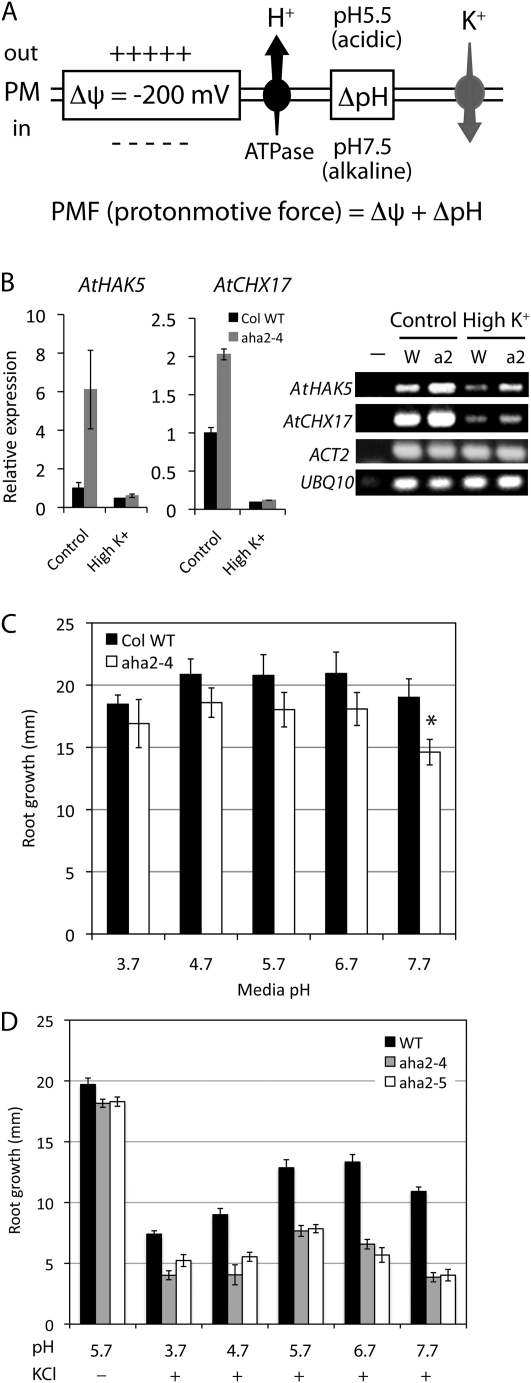Figure 1.
Role of the plasma membrane H+-ATPase in maintaining the PMF. A, Plasma membrane PMF composed of a membrane potential (Δψ) and a proton chemical concentration gradient (ΔpH). The proton gradient (outside high), generated by the H+-ATPase, contributes to both a charge gradient (positive outside) and a pH gradient (acidic outside). High concentrations of potassium entering the cytoplasm result in a reduction of the charge gradient and membrane depolarization. B, Relative expression of K+ transporter genes, AtHAK5 and AtCHX17, in wild-type or aha2 mutant seedlings grown in the presence or absence of 100 mm KCl. The endogenous reference genes, ACT2 and UBQ10, were used to normalize and calculate the relative expression of the K+ transporter genes. The left panels show the quantitative analysis of gene expression, and the right panel shows images of agarose gels presenting PCR products of AtHAK5, AtCHX17, ACT2, and UBQ10. −, Negative control; W, wild type; a2, aha2-4 mutant. C, Root growth of the wild type (WT) and aha2-4 at various pH values. The asterisk indicates a statistical significance between the wild type and the aha2 mutant (P = 0.0036). D, Hypersensitivity of aha2 mutant root growth to reduced PMF. High external pH (reduced ΔpH) and high external potassium (reduced membrane potential) have an additive effect on the impaired growth of aha2 mutants. Plants were grown under various pH values in the presence or absence of 100 mm KCl. Data are shown as means of 14 seedlings ± se.

